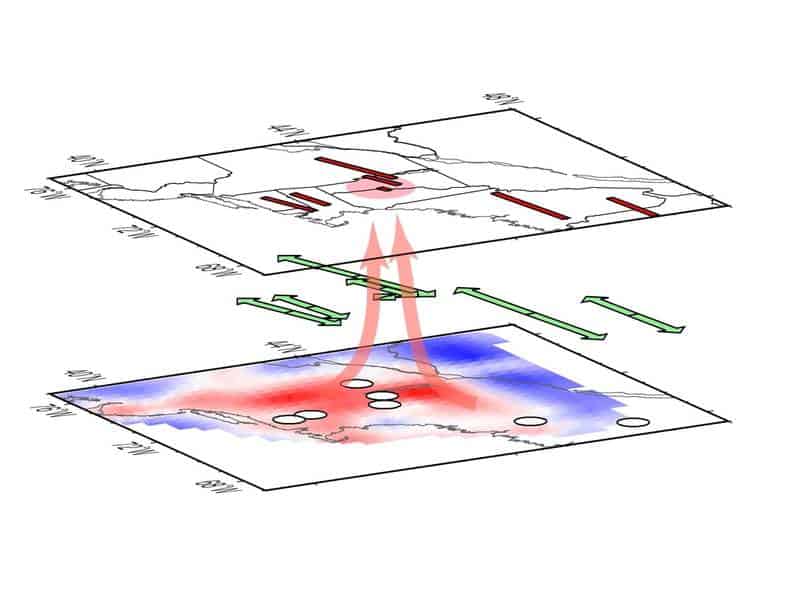
This lava eruption could happen in some parts of New England, but not in the next couple million years. Credit: Pixabay.
Geologists have identified a “mass of warm rock” that is rising beneath northern New England. The formation could be an ominous sign of a possible volcanic eruption millions of years from now.
“The upwelling we detected is like a hot air balloon, and we infer that something is rising up through the deeper part of our planet under New England,” said lead author Vadim Levin, a geophysicist at Rutgers University. “It is not Yellowstone (National Park)-like, but it’s a distant relative in the sense that something relatively small – no more than a couple hundred miles across – is happening.”
“Our study challenges the established notion of how the continents on which we live behave,” Levin said. “It challenges the textbook concepts taught in introductory geology classes.”
Levin and colleagues tapped into the EarthScope program which employs thousands of seismometers, each spaced 46.6 miles apart, covering the continental United States. The scale of the program, whose mission is to reveal the structure and evolution of the North American continent, is unprecedented.

Credit: A colored map of mantle flow under the North American tectonic plate. The warm colors indicate lower speed, implying that rock in those regions is less dense, likely warmer and rising toward the surface. Credit: Vadim Levin/Rutgers University-New Brunswick.
By studying seismic waves recorded over the last two years, the Rutgers researchers could peer inside Earth’s interior, where they could see the shapes and texture of structures but also changes in the state of materials. Levin’s team focused their study on the New England area because that’s where an anomalous area of great warmth in the upper mantle was previously reported.
Following a careful assessment of this area of interest, the researchers detected an upwelling pattern beneath central Vermont and western New Hampshire but also parts of western Massachusetts. In this region, mantle flow indicators are the smallest, likely because warmer rock flows upward and disrupts the horizontal flow. Given enough time, the magma could erupt to the surface.
New England residents shouldn’t be too worried that a volcano will suddenly pop up in their backyards. Such an event looks to be millions of years away.
“The Atlantic margin of North America did not experience intense geologic activity for nearly 200 million years,” Levin said. “It is now a so-called ‘passive margin’ – a region where slow loss of heat within the Earth and erosion by wind and water on the surface are the primary change agents. So we did not expect to find abrupt changes in physical properties beneath this region, and the likely explanation points to a much more dynamic regime underneath this old, geologically quiet area.”
“It will likely take millions of years for the upwelling to get where it’s going,” he added. “The next step is to try to understand how exactly it’s happening.”
Findings were reported in the journal Geology.









